Apple MacBook Pro 13-inch (M1, 2020)
Two-minute review
With the MacBook Pro 13-inch (M1, 2020), Apple has done more than just refresh the smallest laptops in its Pro line. Moving to its own M1 chip and away from Intel CPUs, as the company has done with the MacBook Air (M1, 2020) and the Mac mini (M1, 2020), represents a huge leap forward for the 13-inch Pro. This move has breathed new life into the laptop line in a way that we haven’t seen in a long time.
It’s true that the MacBook Pro 13-inch M1 looks largely the same and doesn’t come with any significant updates outside of the M1 chip. Owners of a 2019 or even an early 2020 model will probably want to wait a generation or two before upgrading. However, just that update makes the laptop a remarkable one. The improvement in performance over its Intel-powered predecessors is large. In fact, it’s 2.8 times faster over the prior model, not to mention its battery life is better. Additionally, it’s three times faster than equivalent Windows laptops.
The MacBook Pro 13-inch (M1, 2020) meets almost all of our expectations. If Apple wanted to launch something revolutionary, it certainly managed that.
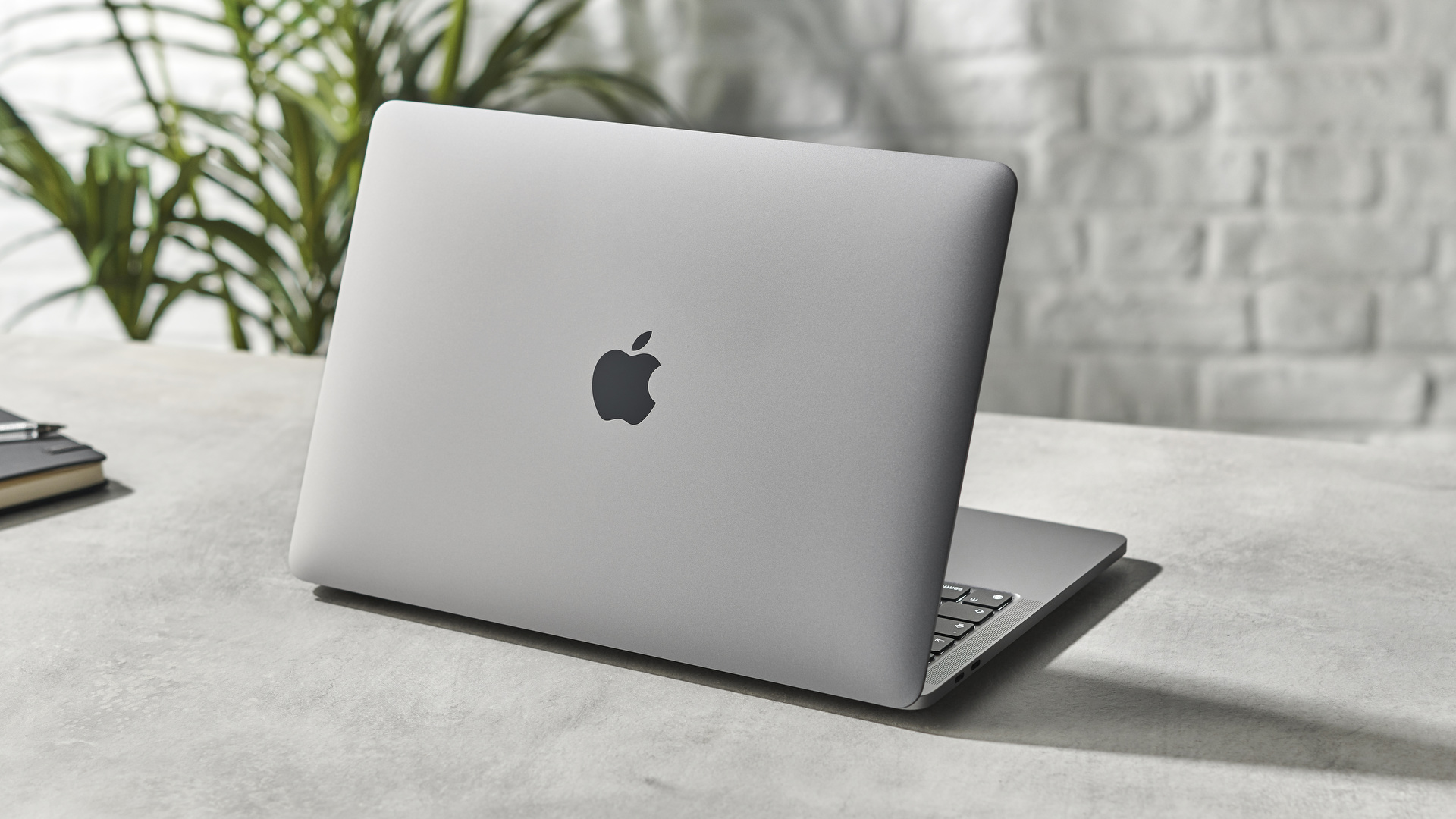
Price and availability
Prices for the MacBook Pro 13-inch (M1, 2020) start at $1,299 / £1,299 / AU$1,999 for the 256GB SSD/8GB RAM model, with the 2TB SSD/16GB RAM model selling for $2,299 / £2,299 / AU$3,499.
Both models come with the same M1 chip with an 8-core CPU and 8-core GPU, and storage can be configured up to 2TB.
For comparison, the MacBook Pro (2020) launched earlier this year for $1,299 / £1,299 / AU$1,999, so we're not seeing the price cut on the MacBook Pro some were hoping to see now that Apple has moved to its own silicon, but we commend Apple for releasing the new version at the same price as the previous model.
What’s interesting is that the new MacBook Air (M1, 2020) is available with the same M1 chip, and with the same amount of RAM and 512GB storage, for $1,249 / £1,249 / AU$1,949. Usually, we wouldn't compare the MacBook Pro with the MacBook Air, but considering how close the specs are, and the fact that new MacBook Air also features a screen that supports the P3 color gamut, previously exclusive to MacBook Pros, there may be some people who think going for the Air is a better choice, especially as it comes with double the capacity for less money.
However, the MacBook Air (M1, 2020) has a fanless design, whereas the MacBook Pro 13-inch (M1, 2020) still has fans. This means the new MacBook Air is limited in how long it can run intensive tasks for before its performance is throttled in order to prevent overheating, due to there being no fans to cool it down.
If you’re going to have your machine working for hours on end on rendering tasks, for example, then the MacBook Pro 13-inch (M1, 2020) will be worth the extra outlay.
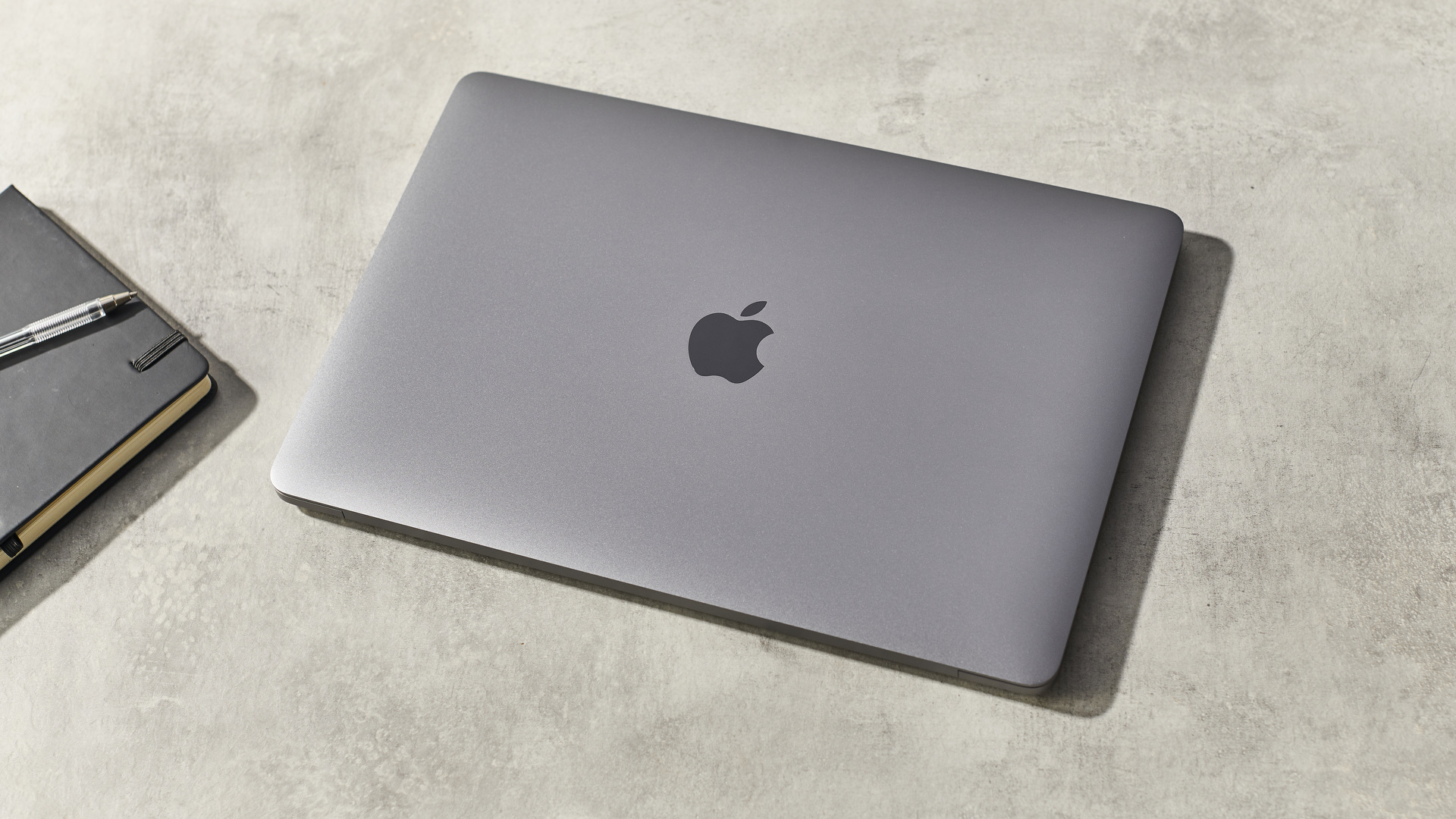
Here is the 13-inch MacBook Pro (M1, 2020) configuration sent to TechRadar for review:
CPU: Apple M1 (8-core)
Graphics: Integrated 8-core GPU
RAM: 8GB Unified PDDR4X-4266 MHz SDRAM
Screen: 13.3-inch, 2,560 x 1,600 Retina display (backlit LED, IPS, 500 nits brightness, wide color P3 gamut)
Storage: 256GB SSD
Ports: 2x Thunderbolt 3 (USB-C), 3.5mm headphone jack
Connectivity: Wi-Fi 6, Bluetooth 5.0
Camera: 720p FaceTime HD webcam
Weight: 3.0 pounds (1.4kg)
Size: 11.97 x 8.36 x 0.61 inches (30.41 x 21.24 x 1.56cm; W x D x H)
Design
The MacBook Pro 13-inch (M1, 2020) is one of the most exciting releases from Apple for a while, thanks to its new M1 silicon brains, but you probably wouldn’t think that when you first get it out of the box.
That’s because, with its dimensions of 0.61 x 11.97 x 8.36 inches (1.56 x 30.41 x 21.24cm) and a weight of 3.0 pounds (1.4kg) it's pretty much the same as the previous model. It certainly looks and feels identical to previous MacBook Pro 13-inch models, so anyone hoping for a radical new look to match the radical new hardware within is going to be disappointed.
We feel that this is a bit of a missed opportunity for Apple. It’s made a big deal of what a revolutionary change its move to the M1 chip is, along with macOS Big Sur – which is a big enough change to warrant naming it ‘macOS 11’, and not ‘macOS 10.17' – so we’d have like to see Apple be just as bold with the look of the MacBook Pro 13-inch.
Apple would probably argue, along with some of its fans, that the MacBook Pro 13-inch’s design is perfect, so there’s no point changing it. In a way that’s fair – this is still a good-looking laptop after all, and it remains impressively thin and light; but when Apple's rivals, such as Dell and HP, are doing some innovative things with their designs, be it super-slim bezels or 2-in-1 designs that let you use the laptop like a tablet, the MacBook Pro 13-inch (M1, 2020)’s look starts to feel a little dated.
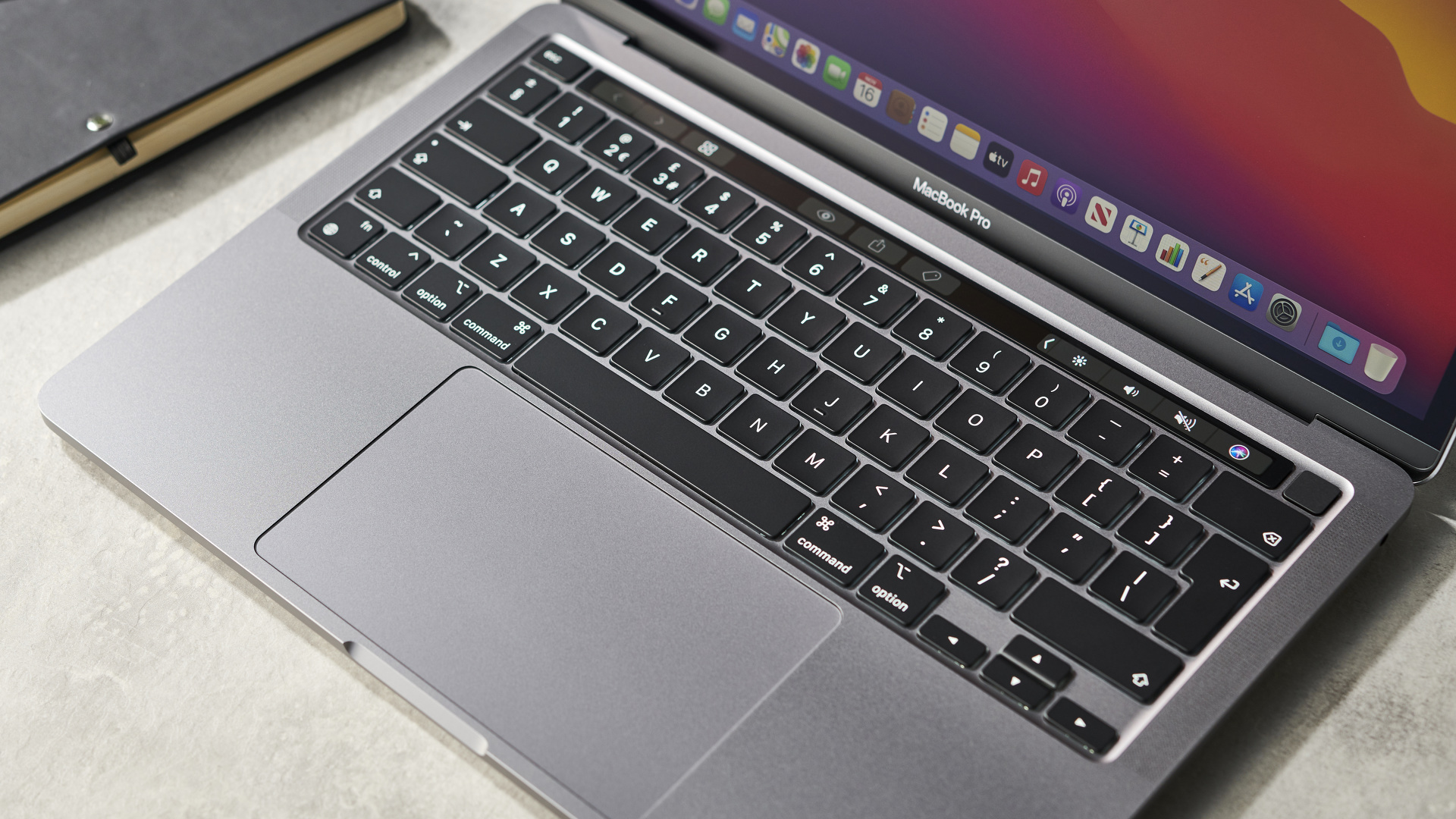
For a while now, many people felt that Apple had neglected the Mac and MacBook in favor of the iPhone. After all, could you imagine Apple sticking with the same iPhone design since 2016? That’s pretty much what it has done with the MacBook Pro 13-inch, barring a few tweaks.
It’s a bit of a shame, as in other respects – the revolutionary M1 chip and the improvements the company has brought to macOS Big Sur – it does feel like Apple is excited about MacBooks again.
Still, for the purpose of this MacBook review, the design of the MacBook Pro 13-inch (M1, 2020) isn’t bad by any means, just rather familiar – and that sense of familiarity is maintained when you open the laptop. The TouchBar returns – if you’re not familiar with this, it’s a thin touchscreen that runs along the top of the keyboard, and which shows context-sensitive buttons and shortcuts depending on what app or tool you’re currently using.
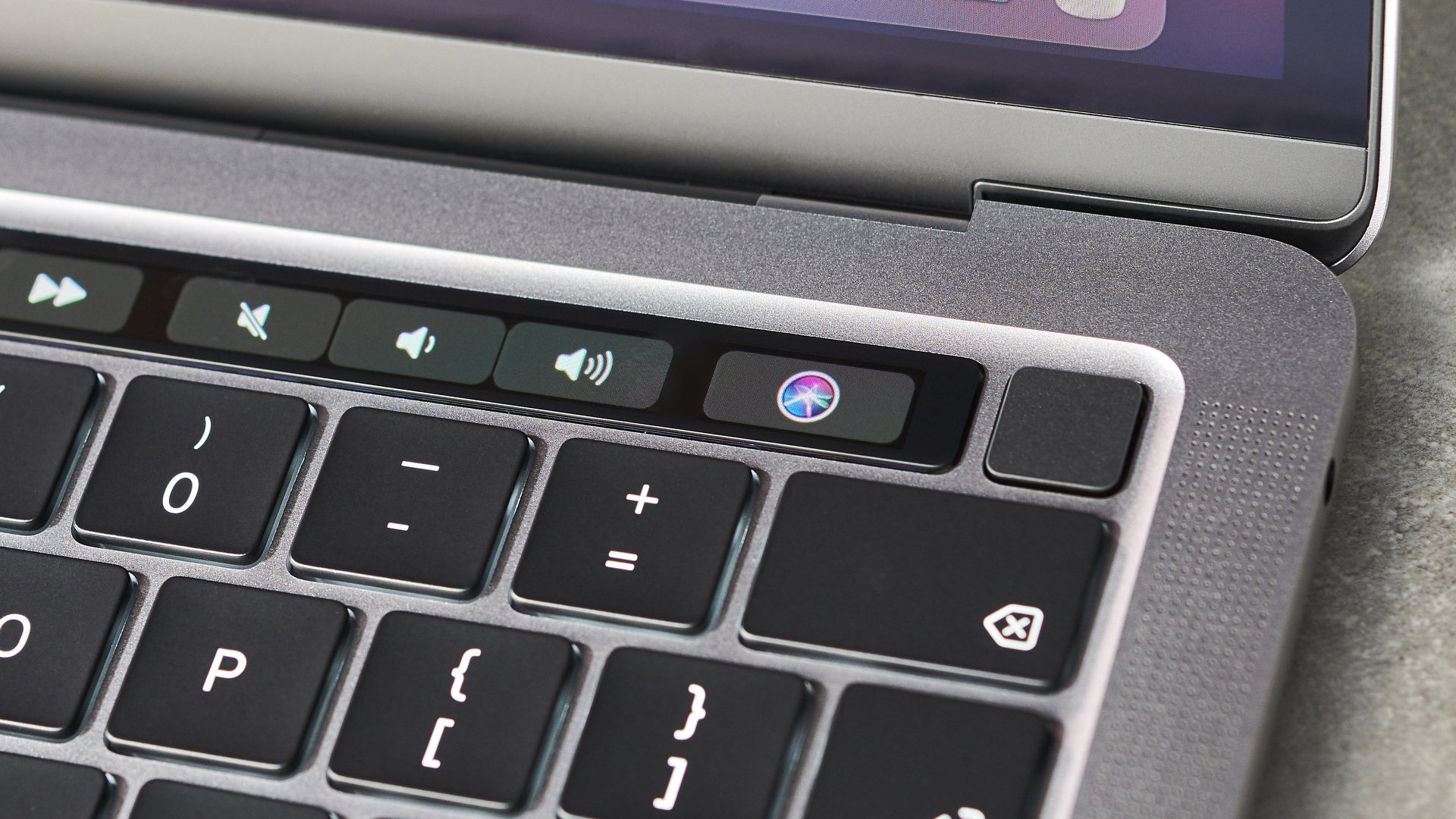
When it first appeared four years ago, opinion was divided as how useful it was, but over the years we’ve found ourselves warming to it, and as more third-party applications have added TouchBar functionality it’s become more useful. It’s good to see it back, and it shows that Apple’s move to the M1 chip and macOS Big Sur hasn’t caused it to ditch this feature. The escape key on the left is once again separate, rather than being included in the TouchBar, which was a request of many people who use the key a lot (such as developers).
The keyboard is the same Magic Keyboard as the one introduced with the MacBook Pro 13-inch from earlier this year. This was a welcome change at the time, as it replaced the controversial Butterfly switch keyboard, which was often prone to reliability problems. It’s good to see it back in the new MacBook Pro 13-inch, and it again feels great to type on.
The screen is also unchanged, with a Retina resolution of 2560 x 1600. This results in a sharp image, but again Apple is being outclassed here by rivals such as HP and Dell, who are putting higher-resolution screens on their 13-inch laptops.
Still, the screen of the Apple MacBook Pro 13-inch (M1, 2020) remains bright and vibrant. It also supports the P3 wide color gamut, offering excellent color reproduction – this is great for photographers and video editors, who need true-to-life colors, but it’s worth pointing out that the new MacBook Air (M1, 2020) also now comes with P3 wide color support. This makes the more affordable MacBook Air a viable alternative for budget-conscious creatives, and deprives the MacBook Pro of a key selling point.
When it comes to ports, the Apple MacBook Pro 13-inch (M1, 2020) sticks with just the two Thunderbolt 3 ports (both on the left-hand side), and an audio jack on the right.
While we're glad that Apple's move away from Intel hasn't meant losing Thunderbolt 3 (it's an Intel product, after all), this lack of ports continues to be a bit of a pain point for professionals. If you want to copy photos from a memory card, or use peripherals that rely on the older USB-A ports, then you're going to need to buy a dongle. While Dell includes one in many of its USB-C only laptops, Apple doesn't.
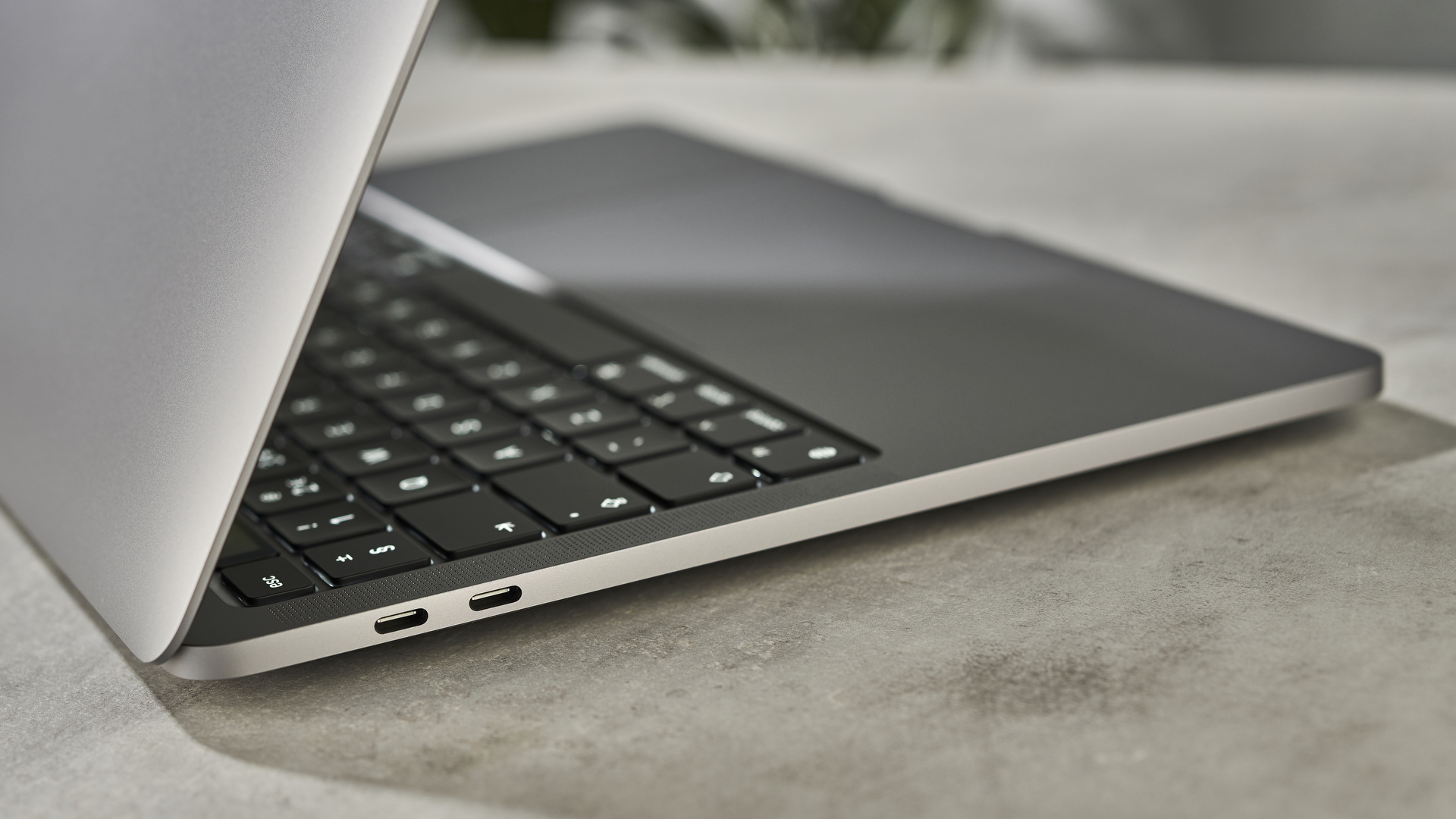
Here’s how the 13-inch MacBook Pro (M1, 2020) performed in our suite of benchmark tests:
Cinebench R23 CPU: Single-Core: 1,491; Multi-core: 7,768
Geekbench 5 Single-Core: 1,732; Multi-Core: 7,590
Battery Life (TechRadar movie test): 13 hours and 22 minutes
Performance
In our time with the MacBook Pro 13-inch (M1, 2020) we were been impressed by its performance. Apple talked a big game about the M1 chip, and claims that its CPU is 2.8 times faster at building Xcode projects, and delivers twice as fast vector performance in Affinity Photo, plus 5.9 times the 3D title render speeds in Final Cut Pro and 2.9 times the performance in Shadow of the Tomb Raider thanks to its GPU.
For a fair MacBook review, we had to take these claims with a hefty dose of salt, as Apple is a bit vague about some of its tests, and when it comes to GPU performance it’s comparing this to a base MacBook Pro 13-inch from the previous generation, which uses an older 8th-generation Intel processor with integrated graphics.
Now that we've had the MacBook Pro 13-inch (M1, 2020) for a while, we can delve deeper into its performance. We ran both native M1 apps and older legacy apps designed for Intel Macs, and they performed really well. We opened up several demanding apps at once, and swapped between them, and throughout macOS Big Sur didn't miss a beat. They opened quickly, and switching between them was almost instantaneous.
As we said in our MacBook Air (M1, 2020) review, the fact that Apple has switched to an ARM-based chip, but via its Rosetta tool allows you to continue to run older apps without any major issues, is commendable. Microsoft has a version of Windows 10 that runs on ARM-based laptops like its own Surface Pro X, but it's limited to only being able to run apps from the Microsoft Store that have been built for ARM architecture – and that means many popular apps just don’t work on Windows 10 on ARM.
The fact that Apple is not only ensuring that pretty much all older Mac apps work on the M1-toting MacBook Pro 13-inch, but also thousands of iOS apps as well, really highlights what a poor effort Microsoft has made with Windows 10 on ARM. It needs to seriously up its game.
Unlike the new MacBook Air (M1, 2020), which runs silently thanks to its fanless design, the MacBook Pro 13-inch (M1, 2020) does still have fans, and they do kick in after a while when you're doing some strenuous work on the device. The laptop also gets rather warm towards the back at times. However, the fans don't ever get too distracting, and for day to day use you'll never hear them.
The fact that the MacBook Pro 13-inch (M1, 2020) has fans means it can work harder and longer than the MacBook Air (M1, 2020) as well. Due to its fanless design, the new MacBook Air has to throttle performance (by lowering the speed of the M1 chip) to avoid overheating. This makes the Pro the better choice for professionals that are using it for prolonged intensive tasks, such as rendering complex 3D animations.
The benchmark results were also incredibly impressive. We'd seen leaked Cinebench scores suggesting that the M1 chip can beat powerful Intel 11th gen chips, and it proved to be correct. In the intensive Cinebench R23 benchmark, the MacBook Pro 13-inch (M1, 2020) scored a whopping 7, 768 points in the multi-core test. That puts it well above the performance of the entry level MacBook Pro 16-inch with a six-core 9th generation Intel Core i7 processor. The fact that the laptop sells for $2,399 (£2,399 / AU$3,799), which is around $1,000/£1,000 more, and has a dedicated graphics card, casts the cheaper MacBook Pro 13-inch (M1, 2020)'s performance in a very positive light.
The Geekbench 5 results also show what a big improvement the M1 chip is compared to the previous model with a 2.0GHz Intel Core i5-1038NG7 quad-core processor. Scoring 1,732 in the single-core tests, and 7,590 in the multi-core tests, it roundly beats the earlier model, which scored 1,268 and 4,490 in the same tests. The extra four cores of the M1's CPU (it's an octa-core chip) are obviously doing some heavy lifting here.
We also had a play around with Final Cut Pro, Apple's video editing software which has been updated to run on the M1 chip, and used it to editing an 8K video using multiple sources. The MacBook Pro 13-inch (M1, 2020) kept up admirably, allowing us to scrub through the footage while showing a preview of the video at the same time. It was seriously impressive. The app did crash once on us, however, when we were adding some titles and fancy effects, but that appeared to be a one off.
On the whole, the video editing performance of the MacBook Pro 13-inch (M1, 2020) was remarkable, with 8K video editing a possibility with the M1's GPU.
Battery life
Apple claims that the MacBook Pro 13-inch (M1, 2020) has the "longest battery life ever in a Mac", promising a huge 17 hours of wireless web browsing, and up to 20 hours of video playback – a whopping 10 hours more than the previous model.
Again, these are big claims from Apple, and by its very nature you’re going to be using the MacBook Pro 13-inch for more intensive tasks than that, but we’ve usually found Apple’s battery claims to be pretty on the mark.
In our battery life benchmark test, the MacBook Pro 13-inch (M1, 2020) lasted 13 hours and 22 minutes. During this test we play a looped 1080p video with the screen at 50% brightness until the battery dies. Now, while that isn't quite as long as the 20 hours Apple was claiming, it's still a very impressive score, and a decent improvement over the earlier 2020 Intel model, which lasted 8 hours and 31 minutes in the same test.
That around a 5 hour bump - seriously impressive. It's also longer than the MacBook Pro 16-inch's record of 11 hours and 41 minutes, and also beats the latest Dell XPS 13 model, which scored 11 hours.
The battery life of the Apple MacBook Pro 13-inch (M1, 2020) is so impressive, that we were actually able to use it straight out of the box, and didn't plug it in for a couple of days later. This was doing a bit of light use - browsing the web and writing emails - so when it comes to much more intensive tasks, that battery life is going to deplete faster. Still, this is very impressive.
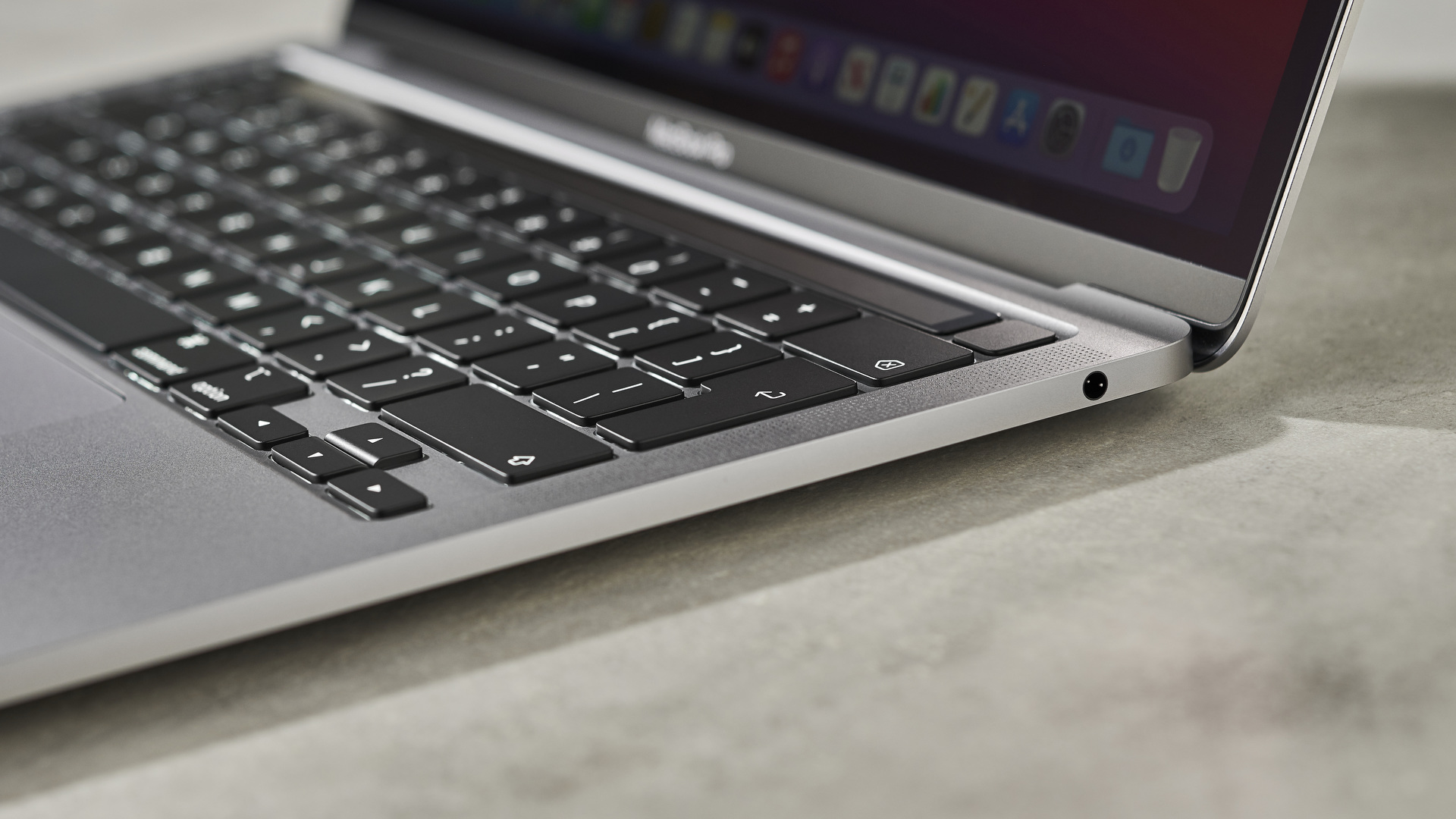
Buy it if...
You want a powerful (and small) MacBook
The MacBook Pro 13-inch (M1, 2020) has had an impressive power boost thanks to the new M1 chip. It's genuinely quite exciting what Apple has achieved here.
You want excellent battery life
Normally powerful laptops have to make do with short battery lives, but the MacBook Pro 13-inch (M1, 2020) manages to balance performance with a battery life that can last well beyond the whole work day.
You want to edit ultra-high definition videos
The performance of the MacBook Pro 13-inch (M1, 2020) is good enough to easily handle 4K - and even 8K - videos. This is impressive stuff.
Don't buy it if...
You're on a budget
While the MacBook Pro 13-inch is the most affordable MacBook Pro, it's still very expensive. Meanwhile, the new MacBook Air (M1, 2020), offers similar performance in many areas, for quite a bit less.
You want a graphical powerhouse
While the 13-inch MacBook Pro is no slouch in the performance department, it still relies on integrated graphics, which means it's not great at seriously intensive graphical tasks.
You don't like Apple's designs
Once again, Apple hasn't made any big changes to the overall design of the MacBook Pro 13-inch. It's now been a few years, and if you didn't like how it looked before, this won't change your mind.
- These are the best laptops of 2020
- Do more with your Macbook with a Mac VPN
- Check out all the latest cheap MacBook Pro deals
0 comments:
Post a Comment